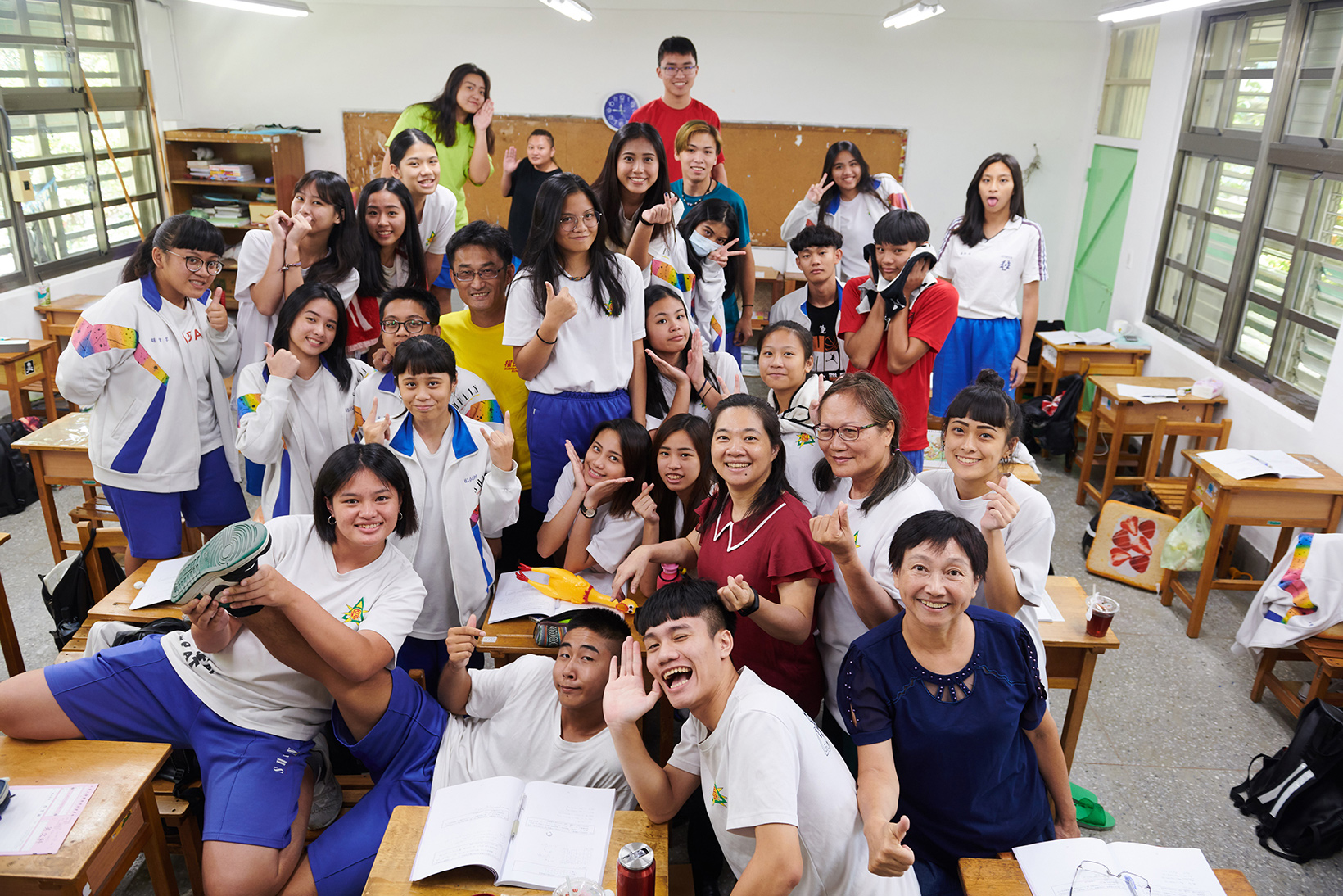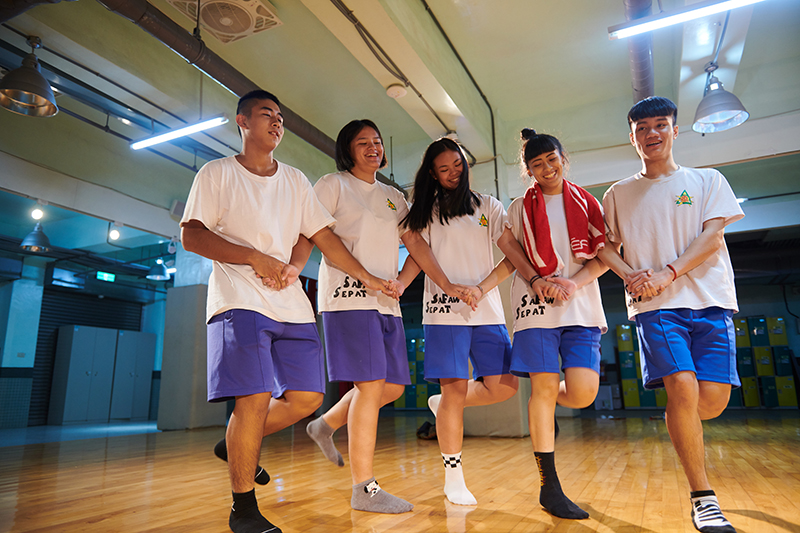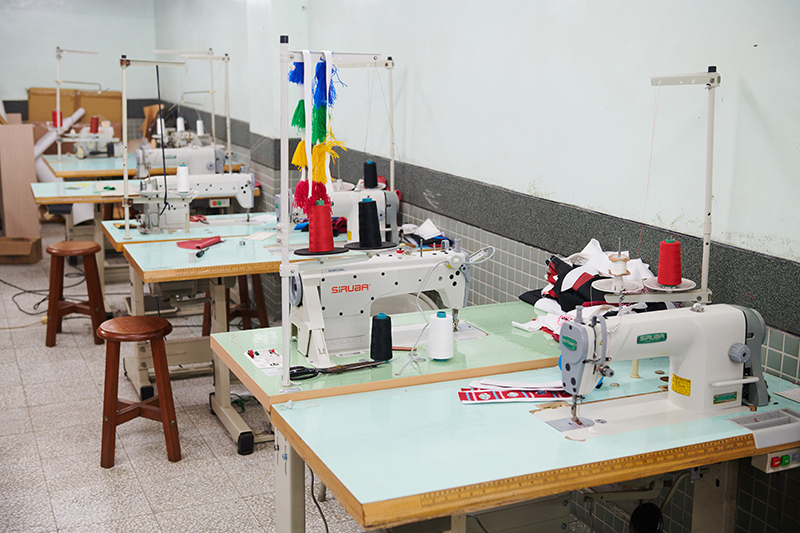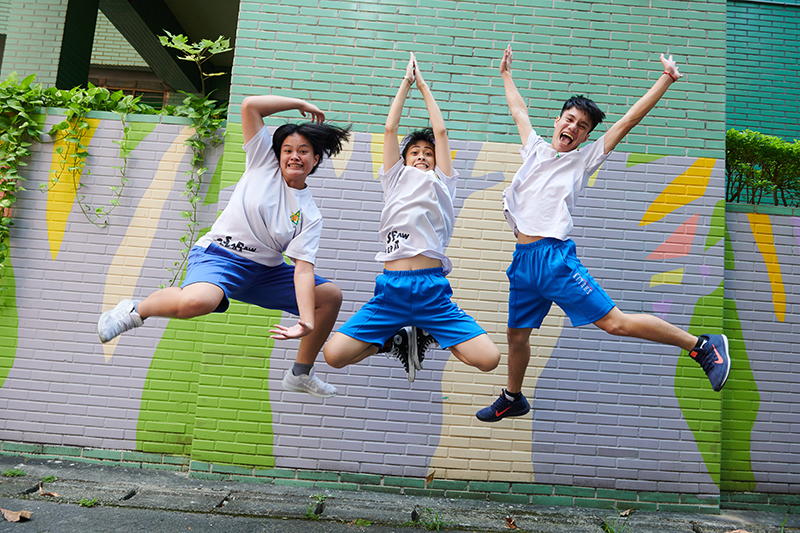Which subject is the most favorite one among students? Students at Craftsmanship Class for the Indigenous Peoples in Shulin High School in New Taipei City will tell you, “Ethnic Costumes” or“ Traditional Music and Dance!” Even though they need to come to consultation sessions during summer, they do not feel tired. The whole classroom is filled with passion and vigor.
Shulin District has the highest indigenous population in New Taipei City and about 8% of students in Shulin High School are from indigenous background. But there has been a low percentage of indigenous students in New Taipei City receiving education higher than high school compared to the national average. Thus, Shulin High School in 2008 set up Craftsmanship Class for the Indigenous Peoples to provide indigenous students better educational resources and to help them safeguard and inherit ethnic cultures.

Passionate and energetic students from craftsmanship classes for the indigenous peoples of 3rd year student of shulin senior high school demonstrating cohesion and friendship.
Visits to Indigenous Communities
to Help Indigenous Students in Cities to Know Ethnic Cultures
For indigenous students growing up in cities, they are both familiar with and stranger to their own ethnic culture. Cheng Ya-Chi from Pangcah community lived with her grandparents in Yuli Township, Hualien County since she was little. Until in Junior High School, her parents brought her to Sanxia, New Taipei City. The community life that she was familiar with became remote. Tseng Chen Kung-Hsien whose hometown is a Paiwan community nearby Fugang Fishing Port, Taitung County was born and grew in Shulin. His parents have been busy at work and seldom go back to their hometown. For him, going back to the Paiwan community means a temporary visit. He does not feel going back home. It is Craftsmanship Class for the Indigenous Peoples that helps these students to understand their cultural roots deeply.
At Craftsmanship Class for the Indigenous Peoples, students need to study general subjects like others as well as courses of indigenous cultures, traditional music and dancing, and traditional costume making. Additionally, the School also arranges cultural seminars, indigenous language accreditation classes, visits to relevant cultural and art venues of the indigenous peoples. In summer and winter vacation, students are led to field trips to indigenous communities.
Compared to students in general class, these students need to spend 4-5 hours more on craftsman courses. In the 2nd and 3rd Year, they have to make use of their time outside class to prepare for demo presentation. Although they need to work very hard, these students love cultural courses. They would tell you in detail about indigenous communities they visit and share their great joy with you. For example, their stayed a night in Saysiyat Community in Miaoli and visited the Red Leaf Community and Orchard Island in Taitung, Kanjin Community in Taoyuan, and Sanying Community and Xizhou Community in New Taipei City.

Learning traditional music and dance in the Dancing Room, is one of favorite courses of students.
The Most Popular Courses,
Traditional Music & Dance and Ethnic Costume Making
According to Lai Hui-Ying, Home Teacher of the Third-Year Students, when Craftsman Class for the Indigenous Peoples was established, the biggest challenge was planning students’ favorite indigenous cultural courses. Because these courses need to be taught by indigenous teachers who are professional and willing to take the mission to hand down cultural heritage, most of the time, these teachers have already actively devoted themselves to indigenous and community education. Located in a big city, Shulin High School found it difficult to recruit these teachers.
Fortunately, over the past years, professional and passionate indigenous teachers are at the school to teach students. Lin Yuan-Hsiang who teaches traditional music and dance commutes from Hualien to Shulin every week to teach traditional indigenous music and dance. After long-year cultivation, music and dance performance of Shulin High School has become famous in Northern Taiwan.
Another favorite course of students is “Ethnic Costume Making” taught by the indigenous teacher, Kaing Lipay. The course requires students have to make their own ethnic costumes before graduating. It is time consuming to make ethnic costumes and that process enables students to know more about their own cultures. Tseng Chen Kung-Hsien said for Paiwan people, there has been the caste system. People with different statuses have to use different decoration patterns and wear different costumes and one of their assignments given by the teacher was going home to consult with the elderly at home about their family history.
“At the beginning, I thought the pattern requested by the teacher does not look nice.” Cheng Ya-Chi admitted that she has an argument with the teacher about style of her ethnic costume. She thought modified Pangcah costume is more beautiful from the modern perspective of aesthetics but her teacher insisted on the preservation of original manner. Her teacher tried to reason Cheng from the perspective of “heritage” and when tradition is changed along with modernity and fashion, unique cultural languages on indigenous costumes may disappear. This point convinced Cheng and Ethnic Costume Making became her favorite course.


Weaving, the required course, requesting students to make their own ethnical cloth before graduation.
More Passion Returned by Students
for You Company and Caring
“The indigenous children needs your company the most,” said Lai Hui-Ying who has been the home teacher of the Craftsman Class for the Indigenous Peoples for six years. She described the pressure for indigenous children who live in cities to integrate with the mainstream society; they mostly are the economically disadvantaged and they parents cannot find much time to accompany them. In general, indigenous students are lack of confidence.
These students may come from families with different background and teachers need to sympathize and care them more. Some may have parents both re-married and children cannot get along with new family members while others need to help make a living for their families and have difficulty to find the balance between work and school. In addition to patient listening and company, Lai tries to help students to graduate without too many absent hours. Lai said it gently, “It is also a teacher’s mission and responsibility to find the balance among family, work, and school.
Living in cities, indigenous students due to different figure profile and skin color may look very different from others. They are then disadvantaged. But here Craftsmanship Class for the Indigenous Peoples is like a big family where students are able to open their heart to learn together. After the establishment of the Class, as long as students are willing to go to universities, most of them demonstrate good academic performance. About one third of them are administered to national universities. “Some of them are very naïve and straightforward and they bring joy to people surrounding them. Our class is happy and unified. That explains why I like to be with them,” said Lai with a smile.
Craftsmanship Class for the Indigenous Peoples provides the arena for indigenous students in their growth and learning stage for them to make their dreams come true regardless of their willingness to advance indigenous music and dance or develop physical strength. These students may not be so sure about their future career, yet the Class gives them more options and opportunities in cities to decide their future.





